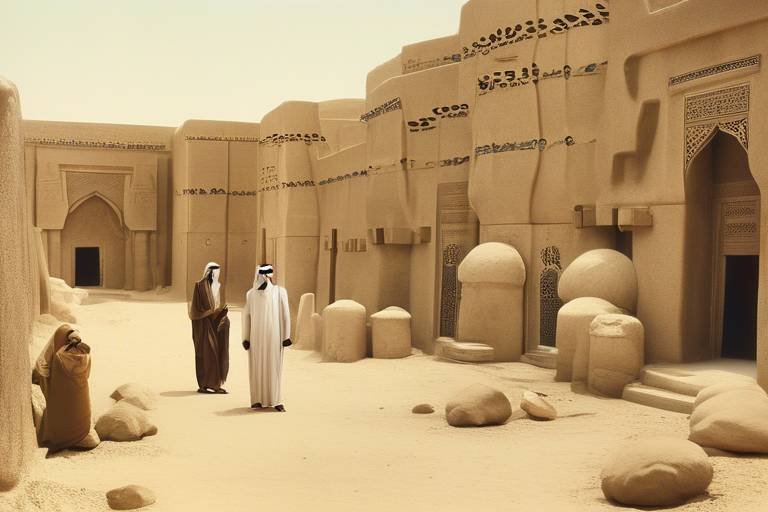The Influence of the Phoenicians on Cultural Exchange
The Phoenicians were pivotal in shaping cultural exchange through their robust trade networks, maritime ventures, and establishment of colonies. Their influence extended far and wide, leaving a lasting impact on various aspects of art, language, religion, and technology.

Phoenician Trade Routes
The Phoenicians played a significant role in facilitating cultural exchange through their extensive trade networks, maritime activities, and establishment of colonies. Their influence spread across the Mediterranean and beyond, impacting art, language, religion, and technology.
Exploration of the Phoenician trade routes reveals the extent of their influence on cultural exchange. These routes connected the Mediterranean world, allowing for the exchange of goods, ideas, and customs among diverse civilizations.
The Phoenicians were renowned traders who navigated the seas with skill and precision, establishing trade routes that linked major ancient civilizations. Their ships, equipped with advanced navigation techniques, sailed to distant lands, carrying exotic goods and cultural influences.
Through these trade routes, the Phoenicians not only transported commodities such as textiles, metals, and luxury items but also facilitated the exchange of knowledge and ideas. The bustling ports of Phoenician cities served as vibrant hubs where merchants, scholars, and travelers from different regions converged, fostering a dynamic cultural exchange.
Moreover, the Phoenician trade routes were not just about commerce; they were conduits of cultural diffusion. As goods moved from one region to another, so did customs, traditions, and artistic influences. The intermingling of diverse cultures along these routes gave rise to a rich tapestry of shared experiences and innovations.
It was through these interconnected trade networks that the Phoenicians played a pivotal role in shaping the cultural landscape of the ancient world. Their voyages across the seas not only brought prosperity to their cities but also laid the foundation for cross-cultural interactions that would leave a lasting legacy on civilizations to come.

Phoenician Colonies
The Phoenicians were renowned for their establishment of colonies along the Mediterranean coast and beyond, creating vibrant centers of cultural exchange. These colonies served as crucial points of contact between the Phoenicians and other civilizations, fostering the exchange of ideas, traditions, and technologies. The bustling ports of cities like Carthage, Cadiz, and Utica became hubs where diverse cultures converged, leading to a melting pot of influences.
Through their colonies, the Phoenicians not only expanded their trade networks but also facilitated the transfer of knowledge and practices across different regions. These settlements were characterized by a blend of Phoenician culture with elements borrowed from local traditions, resulting in a unique fusion that enriched the cultural landscape of the ancient world.
One notable example of Phoenician cultural influence can be seen in the city of Carthage, which emerged as a powerful maritime empire due to its strategic location and strong ties to Phoenician heritage. Carthage served as a key center for trade and cultural interaction, attracting merchants, scholars, and artisans from various backgrounds.
The Phoenician colonies not only contributed to the economic prosperity of the region but also played a significant role in promoting cultural diversity and cross-cultural dialogue. The exchange of goods, languages, and artistic styles in these cosmopolitan centers created a dynamic environment where innovation thrived and new ideas flourished.
Overall, the Phoenician colonies were instrumental in shaping the cultural landscape of the ancient world, leaving a lasting legacy of interconnectedness and exchange that continues to resonate in the present day.

Phoenician Art and Architecture
The Phoenicians played a significant role in facilitating cultural exchange through their extensive trade networks, maritime activities, and establishment of colonies. Their influence spread across the Mediterranean and beyond, impacting art, language, religion, and technology.
Phoenician art and architecture reflect a blend of influences from various cultures encountered through trade and colonization. Their artistic expressions incorporated elements from Egypt, Mesopotamia, and Greece, showcasing a rich tapestry of cultural exchange.

Phoenician Language and Writing
Exploring the Phoenician language and writing unveils a fascinating journey of linguistic innovation and cultural exchange. The Phoenicians are credited with the development of one of the earliest alphabets, a system that revolutionized communication and paved the way for the evolution of written language. Their alphabet consisted of 22 consonantal letters, lacking vowels, which were later adopted and adapted by various civilizations.
The simplicity and phonetic nature of the Phoenician script made it accessible and adaptable, leading to its widespread use and influence on other writing systems. This innovation allowed for easier transcription of different languages and enhanced cross-cultural communication, fostering a rich tapestry of linguistic exchange.
Moreover, the Phoenician writing system played a crucial role in the transmission of knowledge, literature, and religious texts across regions. As merchants and traders, the Phoenicians carried their written records on papyrus scrolls, disseminating information and ideas to distant lands along their trade routes.
Through their linguistic contributions, the Phoenicians not only facilitated practical communication but also promoted cultural interchange. The adoption of the Phoenician alphabet by various societies led to the development of new scripts, such as the Greek and Aramaic alphabets, further enhancing the interconnectedness of civilizations.

Phoenician Religion and Mythology
The Phoenicians played a significant role in facilitating cultural exchange through their extensive trade networks, maritime activities, and establishment of colonies. Their influence spread across the Mediterranean and beyond, impacting art, language, religion, and technology.
Phoenician religious beliefs and mythological stories were influenced by interactions with other cultures, leading to a syncretic blend of deities and rituals. This exchange of religious ideas contributed to the diversity of spiritual practices in the ancient world.

Phoenician Technological Contributions
When examining the , it becomes evident that their advancements played a crucial role in shaping cultural exchange during ancient times. The Phoenicians were renowned for their expertise in shipbuilding, which allowed them to navigate the seas with precision and efficiency. Their ships, such as the iconic galleys, were instrumental in facilitating trade across vast distances, connecting distant civilizations and enabling the exchange of goods and ideas.
Moreover, the Phoenicians were pioneers in navigation techniques, developing methods that revolutionized maritime travel. By mastering the art of celestial navigation and utilizing astronomical observations, they were able to chart courses accurately and explore new territories. This expertise not only expanded their trade networks but also fostered cultural interactions with diverse societies.
Another significant technological contribution of the Phoenicians was their innovative trade practices. They introduced standardized weights and measures, creating a system that streamlined commercial transactions and promoted fair trade. This standardization not only facilitated economic exchanges but also enhanced cultural exchange by establishing common ground for negotiations and agreements.
Furthermore, the Phoenicians' mastery of metallurgy and craftsmanship allowed them to produce high-quality goods that were in demand across the ancient world. Their expertise in working with metals like bronze and silver resulted in exquisite artifacts and luxury items that were highly prized by neighboring civilizations. This trade in valuable commodities not only enriched the Phoenician economy but also fostered cultural connections through the exchange of luxury goods.
In conclusion, the Phoenician technological contributions in shipbuilding, navigation, trade practices, and craftsmanship were instrumental in promoting cultural exchange and connectivity in the ancient world. Their innovations not only facilitated the movement of people and goods but also served as bridges that connected diverse societies, fostering a rich tapestry of cultural interactions and mutual influences.

Legacy of Phoenician Influence
The legacy of Phoenician influence on cultural exchange is profound and far-reaching, leaving a lasting impact on various aspects of society. Through their extensive trade networks, the Phoenicians established connections that transcended geographical boundaries, fostering a vibrant exchange of goods, ideas, and cultural practices.
One of the key legacies of Phoenician influence lies in their maritime expertise, which revolutionized ancient navigation and trade. The Phoenicians' advancements in shipbuilding and seafaring skills not only facilitated the movement of goods but also served as a conduit for the exchange of knowledge and technologies between different civilizations.
Furthermore, the Phoenician colonies dotted along the Mediterranean coast acted as cultural melting pots, where diverse traditions intersected and merged. These settlements became centers of innovation, where artistic styles, architectural techniques, and religious beliefs intertwined, giving rise to unique cultural expressions that reflected the fusion of various influences.
The Phoenician legacy also extends to the realm of language and writing. The development of the Phoenician alphabet, characterized by its simplicity and phonetic nature, laid the foundation for numerous writing systems that followed. This innovation not only facilitated communication but also enabled the transmission of ideas and cultural practices across linguistic barriers.
Moreover, the syncretic nature of Phoenician religion and mythology exemplifies the depth of cultural exchange that took place. Through interactions with neighboring cultures, the Phoenicians incorporated diverse deities and rituals into their religious beliefs, creating a tapestry of spiritual practices that reflected the interconnectedness of ancient societies.
In essence, the legacy of Phoenician influence on cultural exchange endures as a testament to the power of cross-cultural interactions in shaping human history. From art and architecture to language and technology, the impact of the Phoenicians continues to resonate in the cultural heritage of regions influenced by their dynamic and innovative contributions.
Frequently Asked Questions
- What were the key factors that enabled the Phoenicians to influence cultural exchange?
The Phoenicians played a pivotal role in cultural exchange due to their extensive trade networks, maritime expertise, and establishment of colonies. These factors allowed them to connect diverse civilizations and facilitate the exchange of ideas, goods, and traditions.
- How did Phoenician trade routes contribute to cultural exchange?
Phoenician trade routes linked various regions in the Mediterranean, enabling the flow of commodities and cultural elements between different societies. This interconnected network served as a conduit for the exchange of art, technology, and language, fostering cultural diversity.
- What is the significance of Phoenician colonies in the context of cultural interaction?
Phoenician colonies acted as centers for cultural interaction, where diverse traditions converged and intermingled. These settlements became hubs for the exchange of knowledge, beliefs, and practices, contributing to the enrichment of cultural landscapes.
- How did Phoenician art and architecture reflect cultural exchange?
Phoenician art and architecture exhibited a fusion of influences from various civilizations encountered through trade and colonization. This amalgamation of styles and motifs showcased the interconnectedness of cultures and the creative synthesis that resulted from cultural exchange.
- What was the impact of Phoenician language and writing on cultural communication?
The Phoenician alphabet revolutionized written communication by providing a simplified script that spread widely and influenced the development of other writing systems. This linguistic innovation facilitated cross-cultural dialogue and enhanced the exchange of ideas and knowledge.



















